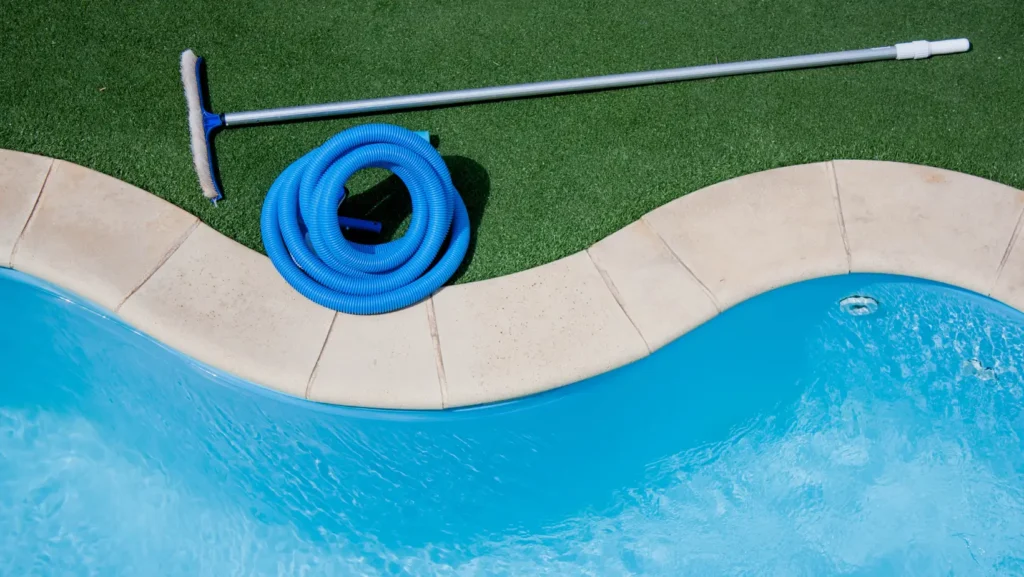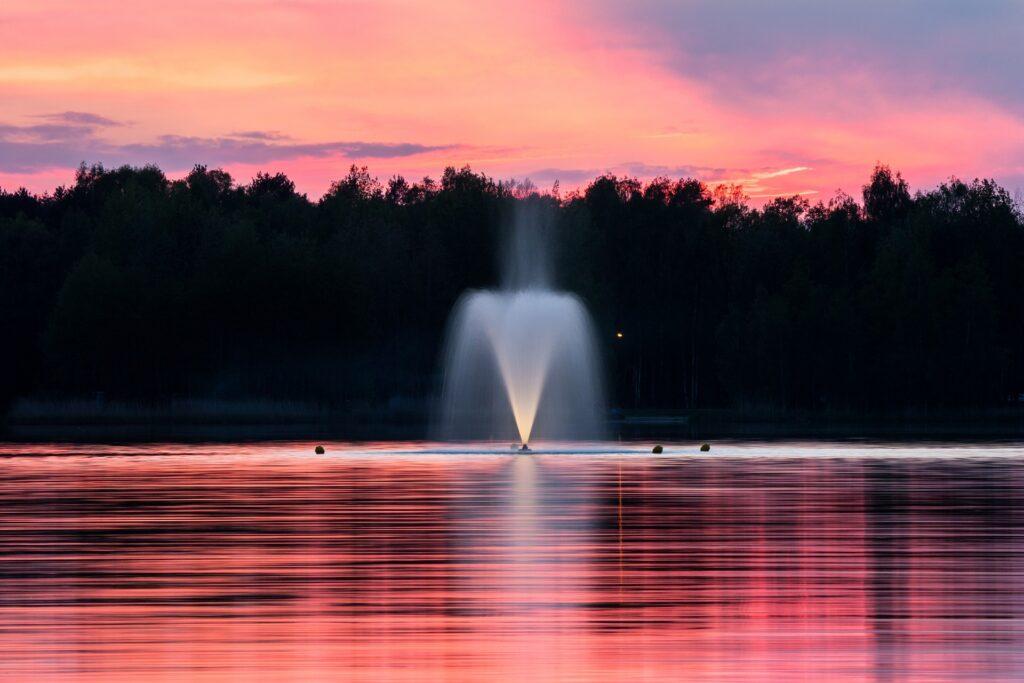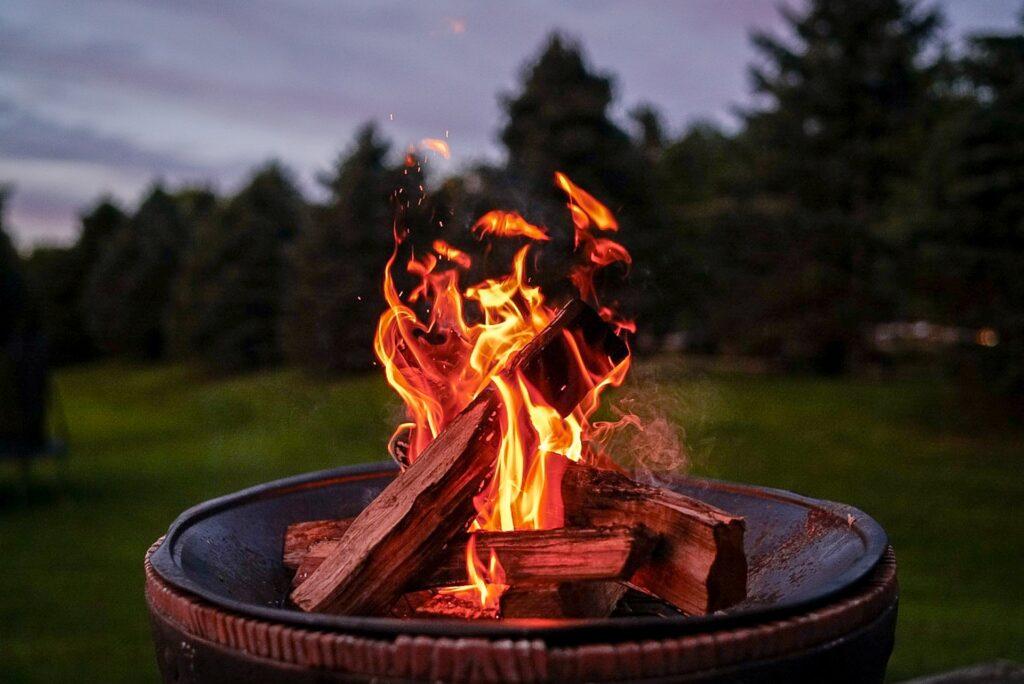To clean above ground pool, skim off large debris floating on the pool’s surface and run the pool pump to remove tiny particles at the pool’s bottom. Then, remove any stubborn stains from the pool’s wall and base using a brush and vacuum cleaner. Finally, balance the water and treat the pool as needed to keep it clean and healthy.

If you have an above-ground pool, you know they require a little more maintenance than your average swimming pool. But, don’t worry, it’s not as difficult as it may seem. In this blog post, we will walk you through everything you need to know to keep your above-ground pool clean and safe for swimming.
How Often Should I Clean Above the Ground Pool?
This was the first thing I asked when I had my above-ground pool installed. And the installer said, “Every day.” Of course, that scared me a bit! But seeing the disappointing look on my face, he smiled and continued, “You don’t have to drain and scrub your pool every day.” Instead, simply skim the pool’s surface daily to remove leaves, bird droppings, insects, and debris. And all you’ll need is a leaf skimmer.
The skimmer will not remove all of the dirt from your swimming pool. Thus, you are advised to clean your above-ground pool at least once a week to ensure the water is safe for swimming. There are many pool cleaning tools to make your cleaning process quicker.
Your weekly cleaning and maintenance routine would comprise the following:
- First, skim the pool and empty the skimmer basket to remove leaves, insects, and debris.
- Brush the pool’s wall, floor, and liner.
- Vacuum clean the pool to eliminate dirt buildup at the pool’s bottom.
- Clean the pool’s surroundings.
- Check the pool pH level to ensure it is between 7.2 and 7.6.
- Check the alkalinity to ensure it is between 80 and 120 parts per million (ppm).
- Check the chlorine level to ensure it is between 2.0 and 3.0 per million (ppm).
- Apply a shock treatment to your pool regularly.
- Treat your pool with algaecide, clarifier, and metal control.
How to Clean Above the Ground Pool without Draining It?
You don’t have to scrub your private swimming pool daily if you have a filterable above-ground pool. Instead, you can keep your pool clean all week by skimming and running the filter pump daily.
But you must wash your pool at least once a week, even if you don’t use the pool very often. This helps to prevent cloudy water and algae growth in your pool. And you don’t even have to drain the pool to clean it.
Following the steps outlined below, you will have a clean and healthy pool to relax in every evening.
Here are the items you’ll need to clean your pool:
- Leaf Skimmer
- Pool Brush
- Vacuum Cleaner
- Garden Hose
- Pool Pole
- Pool Test Strips
- Pool Chemicals such as Pool Shock, Chlorine, Algaecide, Clarifier, pH reducer or increaser.
Step 1: Skim off Dirt
A pool skimmer is used to remove large objects from the surface of your pool to keep your pool filter from becoming blocked.
It is important to skim your pool at least once each day, but you may need to skim it more frequently if:
- Your pool is located in an area with trees and flowers;
- Your pool doesn’t have a cover; or
- Following a strong wind.
Aside from the everyday routine, begin each cleaning operation by skimming the pool.
- Use the leaf skimmer to remove leaves, insects, and debris from the pool’s surface.
- Stir the pool to bring up any dirt that has settled to the pool’s bottom and remove it with your skimmer.
Step 2: Run the Pool Pump
The pool pump helps to circulate water through the pool filter and skimmer. In addition, it sends dirt and debris from the pool’s bottom to the filter and skimmer, thus aiding the cleanliness of the pool. As such, it is recommended that you pump your above-ground pool between 8 and 12 hours every day.
- Start the filtering process by turning on the pool pump.
- Remove the filter if the pool water remains dirty after many hours of pumping.
- Thoroughly clean the filter to eliminate any debris that has blocked it.
- Rinse the filter under running water before reinstalling it.
- To continue filtration, turn on the pool pump.
Step 3: Use a Brush
No matter how strong your pool pump is, some portions of the pool will not get enough water circulation, allowing algae to bloom. This is when your pool brush comes in handy. While the pump runs, brush the pool wall and floor to remove stubborn dirt.
- Scrub the pool wall, floor, ladder, around the steps, beneath the skimmer, and liner using a soft bristle brush.
- Ensure to scrub every nook and cranny of the pool.
- Brush the wall downwards to drive dirt to the pool’s base.
- Avoid using a heavy-duty brush or applying excessive pressure so as not to ruin the pool liner.
Step 4: Use the Vacuum Cleaner
The brush helps to remove debris and stains from the pool’s wall and move it to its base. However, a vacuum cleaner is required to suck out the dirt from the pool base. Invest in automatic pool vacuums to make cleaning easier and less stressful. If not, a manual vacuum cleaner will do the job but may need some elbow grease on your part.
- Connect the vacuum head to the pool pole and a hose.
- Take the vacuum head to the pool’s bottom.
- Connect the hose’s other end to the skimmer to fill it with water.
- When there is no more bubble, connect the hose end to the return outlet.
- Vacuum along the pool’s perimeter to remove dirt and debris.
- You may need to stop at regular intervals to clear the vacuum filter if it becomes clogged with dirt.
- Continue to rotate the vacuum head around the pool base until all the dirt is sucked up.
Step 5: Treat the Pool
After you’ve finished washing and removing dirt, it’s time to make the water safe for swimming. Aside from creating unpleasant odors, unclean pool water can also cause infection. As a result, you must treat your pool regularly.
- Check the pH and chlorine levels of the pool using a test strip.
- The pH level should be between 7.2 and 7.6, and the chlorine level should be between 2.0 and 3.0 parts per million (ppm).
- If the pH of the water is too high, add a pH reducer, and if it is too low, add a pH increaser as directed by the manufacturer.
- If the chlorine levels in the pool are too low, add chlorine to the water.
- Once the water is balanced, shock the pool to remove any remaining algae.
- Follow the manufacturer’s instructions for adding pool shock, algaecide, and water clarifier.
- Then, cover the pool and leave the pool pump to run overnight.
Your swimming pool is now clean and ready to use!
Frequently Asked Questions On How to Clean Above the Ground Pool
When Should I drain My Above-Ground Pool?
If your above-ground pool lacks a filtering system, you should remove the water after a few uses and refill it with fresh water. However, if you have a larger above-ground pool with a filtration system, you may only need to empty it once in two years.
Why Does My Pool Get Dirty After Cleaning?
If your pool becomes dirty after cleaning, your pump or filter is likely blocked or dysfunctional. You should remove the filter and pump to reduce dirt buildup or replace them if damaged.



